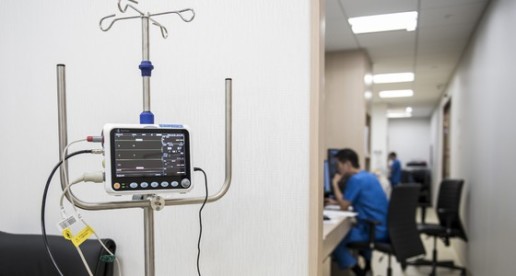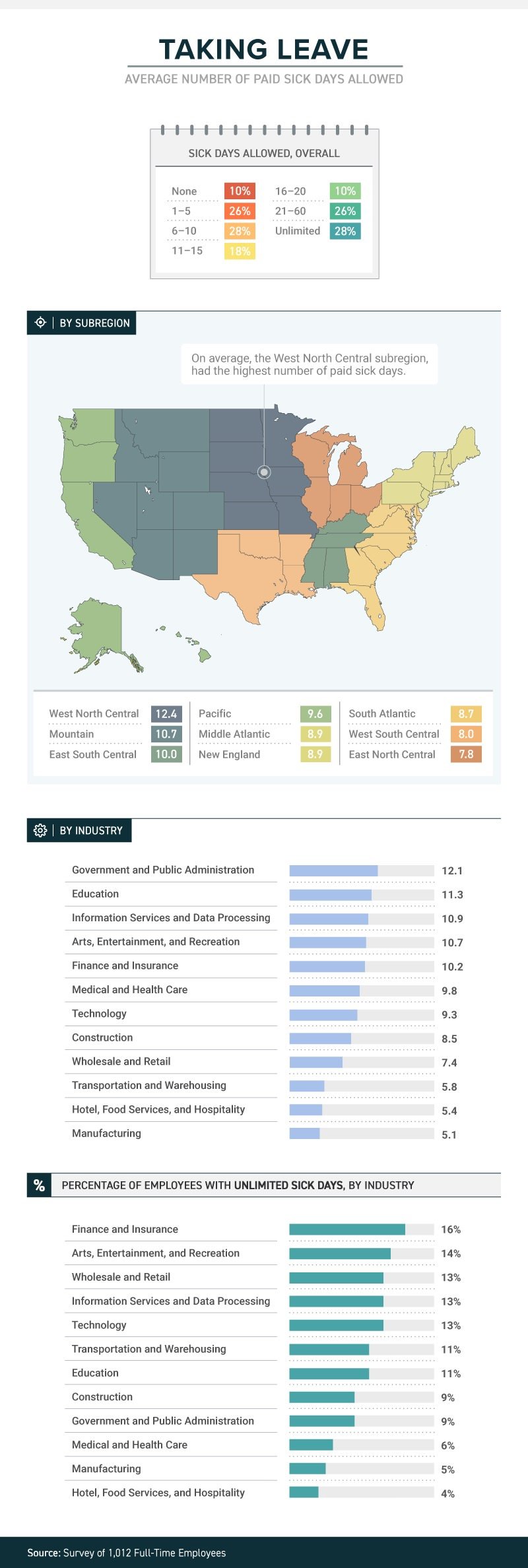Give employees time back in an always-on working world
Occasionally, work extends beyond the traditional workday, no matter how efficient your employees are. With time being the most precious benefit of all, a growing number of employers are offering benefits designed to save employees time. Read on to learn more.
When it comes to employee benefits, what do people really want?
As HR and benefits professionals, we shouldn’t make broad assumptions or generalizations about what benefits our employees need or want. Each employee in any given organization is an individual with different circumstances to be met at every stage in their lives — from those entering the workforce to those preparing to retire, and everyone in between. This is why employers must differentiate their benefits packages to meet the needs of a diverse and multigenerational workforce. And as consumers demand more choice in how they spend their benefits dollars, employers are getting more creative and curating a more expansive set of options for everyone.
No matter how efficient an employee is, work inevitably extends beyond the traditional workday from time to time. Similarly, as the lines between home and work blur with flexible work arrangements and email available 24/7 on smartphones, employees still need to take care of personal tasks, like scheduling family dentist appointments, setting up child care, disputing medical bills or calling the veterinarian … all during the workday.
Regardless of generation, industry, position or title, people are yearning to find the right balance between work and life demand. Time is the most precious benefit of them all. As a result, there are a growing number of employers offering benefits designed to save employees time.
Previously offered predominantly by large, tech companies in Silicon Valley, we’re seeing time-saving benefits spread to employers and industries of all kinds and encompass a variety of conveniences, from on-site dry cleaning pickup, to employer-funded shuttles to get employees to and from work, gym memberships, grocery delivery and services like dog walking and personal errands. This benefits category can also include more significant, personalized benefits like concierge health services, assistance in evaluating elderly care options, telehealth for humans and pets, and emergency childcare services.
Once seen as just perks, these services run deeper. Employers care about their people, and these time-saving benefits — anything people leave work early for, or deal with during the work day — has created a new benefits category that increases employees’ productivity and capacity for work by eliminating distractions and freeing up mental space. While these types of benefits may seem like “nice to have” instead of essentials, they can add up and make a substantial difference in employees’ lives.
Life is complicated. Things go wrong that impact productivity, contribute to presenteeism and the well-being of our workforce; these employee benefits offered through employers are returning valuable time back into someone’s day, helping them focus on work and better balance work and life expectations.
Employees need HR’s help. By not offering a wide variety of benefits personalized to the workforce, employers are missing out on an opportunity to provide great value to employees and make a tremendously positive change in their lives. But many HR professionals falsely assume employees will ask for voluntary benefits directly and proactively make suggestions about what would help them. You may say, “My employees aren’t coming to me asking for things like elder care services, so they don’t need them.” My response is, of course, they’re not asking: they may not want you to know about challenges they’re facing in their personal lives.
Employee’s personal situations are just that - deeply personal. They may be suffering in silence. Americans are now facing the highest housing, education and medical costs in our history, meaning nearly everyone is stressed out about family, work and finances; it’s causing problems in the workplace. If their minds are somewhere else and not focused on work, their productivity could be suffering.
Open Enrollment is rapidly approaching. Don’t wait for your employees to ask you for benefits. Take advantage of OE to ask your employees what they’re looking for, as this is the time they’ll already be assessing what types of benefits they need in the coming year anyway. Use this time to survey the workforce to see what people do or don’t like about their benefits. Be sure to specifically ask “What can we offer you?”
It’s a question, and a gesture, that may matter more to employees than you know.
This article originally appeared in Employee Benefit Adviser.
SOURCE: Oldham, J. (14 September 2018) "Give employees time back in an always-on working world" (Web Blog Post). Retrieved from https://www.benefitnews.com/opinion/give-employees-time-back-in-an-always-on-working-world?feed=00000152-18a4-d58e-ad5a-99fc032b0000
9 Simple Ways to Deal With Stress at Work
The Centers for Disease Control and Prevention reports that 29 to 40 percent of Americans are extremely stressed at work. Read this blog post for nine simple ways to deal with stress at work.
According to research, the percentage of Americans who are stressed at work is high, and it’s only getting higher. According to the CDC’s National Institute of Occupational Safety and Health, studies have found the number of Americans who are “extremely stressed at work” range between 29 percent to 40 percent.
Unfortunately, work stress has significant health consequences that range from the relatively benign—more colds and flus—to the more serious, like heart disease and metabolic syndrome. But, because stress at work is so common, finding a low-stress job may be difficult or impossible for many people. A more realistic choice would be to simply adopt more effective strategies to reduce stress at work. Here are some stress management techniques to try.
Start Your Day Off Right
After scrambling to get the kids fed and off to school, dodging traffic and combating road rage, and gulping down coffee in lieu of something healthy, many people come in already stressed, and more reactive to stress at work. In fact, you may be surprised by how much more reactive to stress you are when you have a stressful morning. If you start off the day with good nutrition, proper planning, and a positive attitude, you may find the stress of the workplace rolling off your back more easily.
Be Clear on Requirements
A factor that contributes to job burnout is unclear requirements. If you don’t know exactly what’s expected of you, or if the requirements keep changing with little notice, you may find yourself much more stressed than necessary. If you find yourself falling into the trap of never knowing if what you’re doing is enough, it may help to have a talk with your supervisor and go over expectations, and strategies for meeting them. This can relieve stress for both of you!
Stay Away From Conflict
Because interpersonal conflict takes a toll on your physical and emotional health, and because conflict among co-workers is so difficult to escape, it’s a good idea to avoid conflict at work as much as possible. That means don’t gossip, don’t share too many of your personal opinions about religion and politics, and try to steer clear of colorful office humor. Try to avoid those people at work who don’t work well with others. If conflict finds you anyway, learn how to deal with it appropriately.
Stay Organized
Even if you’re a naturally disorganized person, planning ahead to stay organized can greatly decrease stress at work. Being organized with your time means less rushing in the morning to avoid being late and rushing to get out at the end of the day. Keeping yourself organized means avoiding the negative effects of clutter, and being more efficient with your work.
Be Comfortable
Another surprising stressor at work is physical discomfort. You may not notice the stress you experience when you’re in an uncomfortable chair for a few minutes. But if you practically live in that chair when you’re at work, you can have a sore back and be more reactive to stress because of it. Even small things like office noise can be distracting and cause low-grade frustration. Do what you can to ensure that you’re working from a quiet, comfortable and soothing workspace.
Forget Multitasking
Multitasking was once heralded as a fantastic way to maximize one’s time and get more done in a day. Then people started realizing that when they had a phone in their ear and were making calculations at the same time, their speed and accuracy (not to mention sanity) suffered. There is a certain kind of frazzled feeling that comes from splitting one’s focus that doesn’t work well for most people. Rather than multitasking, try a new strategy known as chunking.
Walk at Lunch
Many people are feeling ill effects from leading a sedentary lifestyle. One way you can combat that, and manage stress at work at the same time, is to get some exercise during your lunch break and perhaps take short exercise breaks throughout the day. This can help you blow off steam, lift your mood, and get into better shape.
Keep Perfectionism In Check
Being a high achiever can help you feel good about yourself and excel at work. Being a perfectionist, on the other hand, can drive you and the people around you a little nuts. Especially in busy, fast-paced jobs, you may not be able to do everything perfectly. But striving to just do your best and then congratulating yourself on the effort is a good strategy. Your results will actually be better and you’ll be much less stressed at work.
Listen to Music on the Drive Home
Listening to music brings many benefits and can offer an effective way to relieve stress after work. Combating the stress of a long day at work with your favorite music on the drive home can make you less stressed when you get home, and more prepared to interact with the people in your life.
SOURCE: Scott, E. (12 November 2018) "9 Simple Ways to Deal With Stress at Work" (Web Blog Post). Retrieved from https://www.verywellmind.com/how-to-deal-with-stress-at-work-3145273
Are Your Workers Sleeping on the Job?
A recent survey by Accountemps revealed that approximately three-quarters of American adults surveyed reported feeling tired at work often. Consistent tiredness can be a big risk for companies even if employees aren’t actually falling asleep on the job. Continue reading to learn more.
The occasional Monday-morning yawn is a common sight at most offices—but, according to new research, a staggering number of employees report being tired at work. Even if workers aren’t actually sleeping on the job, consistent tiredness could spell big trouble for productivity and retention.
Staffing firm Accountemps surveyed 2,800 American adults working in office environments, finding that nearly three-quarters report being tired at work often (specifically, 31 percent said very often, and 43 perfect reported feeling tired somewhat often). Twenty-four percent said it’s not very often that they’re yawning on the job, while just 2 percent said they never feel tired at work.
The report also ranked the top 15 “sleepiest” cities based on survey responses, with Nashville, Tenn. claiming the No. 1 spot, followed by a three-way tie between Denver, Indianapolis and Austin, Texas.
Michael Steinitz, executive director of Accountemps, noted that on-the-job errors would naturally follow if you have a workforce of tired employees. And, he says, “Consider the underlying causes of why employees are sleepy: If it’s because they’re stretched too thin, retention issues could soon follow.”
Those ideas are bolstered by research from Hult International Business School, which found that the 1,000 workers in its study average about 6.5 hours of sleep per night, lower than the seven to eight hours recommended by the American Academy of Sleep Medicine. Even a half-hour less than the optimal sleep time, researchers found, led to poorer workplace performance. Tired workers reported a lack of focus, needing more time to complete tasks, struggling with creativity, lacking motivation to learn and challenges to multitasking. Many of those side effects of being tired at work, the researchers wrote, are often mistakenly attributed to poor training or work culture when, in reality, they may stem from sleeplessness.
Lack of sleep has a well-documented impact on physical health, and Hult also noted its effects on mental wellness. A vast majority of respondents (84 percent) said they feel irritable at work when they’re tired, and more than half reported feelings of frustration and stress—all of which, researchers noted, can impact teamwork and collaboration.
Accountemps suggested a number of ways employees can guard against being tired at work: physical exercise, being more communicative with managers and leaving work at the office, such as by not bringing a phone or laptop to bed to decrease the chances of letting work communications keep them up at night. On the employer side, the firm recommended managers set reasonable office hours, increase face-to-face meetings with subordinates to see where support is needed and encourage workers to unplug when they leave the office.
SOURCE: Colletta, J. (26 October 2018) "Are Your Workers Sleeping on the Job?" (Web Blog Post). Retrieved from https://hrexecutive.com/are-your-workers-sleeping-on-the-job/
Healthcare waste is costing billions — and employers aren’t doing anything about it
Providing your employees with healthcare insurance is expensive. A large chunk of healthcare costs is being wasted by the healthcare industry, according to a new survey. Read on to learn more.
Providing the workforce with healthcare coverage is expensive, but a new survey of 126 employers suggests a large chunk of that cost is being wasted by the healthcare industry on treatments patients don’t need.
The healthcare industry wastes $750 billion per year on unnecessary tests and treatments, according to a survey from the National Alliance of Healthcare Purchaser Coalitions and Benfield, a market research, strategy and communications consulting firm. Some 60% of employers don’t take steps to manage their healthcare plan’s wasteful spending, despite the fact that the same percentage of employers view it as a problem, the survey says.
“While waste has long been identified as a key concern and cost contributor, employers are operating blind and need to look at a more disciplined approach to address top drivers that influence waste,” says Michael Thompson, National Alliance president and CEO.

Employers are under the impression that prescription drugs are the culprit behind the spending waste, and they are, just not as much as other services. Around 54% of health spending waste is caused by unnecessary medical imaging tests, such as MRIs and X-rays, the survey says. Specialty drugs, unnecessary lab tests and specialists referrals are also major money pits.
However, the survey data isn’t suggesting these procedures and treatments shouldn’t be covered by employer health plans. The tests and treatments are potentially life-saving, they’re just used more than they should be. Sometimes previous test results can help with a current diagnosis, but medical staff don’t always check patient files before ordering new tests.
Most employers don’t monitor unnecessary healthcare spending. The 34% of employers who do rely entirely on their healthcare vendors to do it for them, trusting that it’s being taken care of.
“The idea of reducing waste in the healthcare system can be overwhelming,” says Laura Rudder Huff, senior consultant for Benfield. “While employers ask themselves: ‘Where to start?’ this is an issue where even small steps matter. Employers can begin by collecting data to identify where the inefficiencies are in their workforce and community and use assets such as vendors and organizations like coalitions to realize market improvements.”
The survey also recommends employers enlist the services of Choosing Wisely, an organization that counsels patients and employers on healthcare plans and medical treatments.
This article originally appeared in Employee Benefit Adviser.
SOURCE: Webster, K. (7 November 2018) "Healthcare waste is costing billions — and employers aren’t doing anything about it" (Web Blog Post). Retrieved from https://www.benefitnews.com/news/healthcare-waste-is-costing-billions-and-employers-arent-doing-anything-about-it
Ready for the sounds of office sniffles?
A recent study by law firm, Farah and Farah, states that one in four full-time workers receive between 1 and 5 sick days. Continue reading to learn more.
It’s not just a matter of whether they feel well enough to work, or whether they have sick days. The boss’s attitude about whether workers should take sick days or not can determine whether they actually do stay home when they’re sick, or instead come to work to spread their germs to all and sundry.
A new study from law firm Farah & Farah finds that even though it can take a person some 10 days to fully recover from a cold, approximately 10 percent of full-time workers in the U.S. get no sick days at all (part-timers don’t usually get them either), while more than 1 in 4 have to make do with between 1 and 5 sick days. Just 18 percent get enough sick time to actually recover from that cold—between 11 and 15 days.
The amount (or presence) of sick time varies from industry to industry, with government and public administration providing the most (an average of 12.1) and both hotel, food services and hospitality and manufacturing providing the least (an average of 5.4 for the hospitality industry and 5.1 for manufacturing). Some lucky souls actually get unlimited sick days, although even then they don’t always use them.
Regardless of industry, or quantity, just because workers get sick days it doesn’t mean they use them. Workers often worry that they’ll be discouraged from using them, with employers who may provide them but not encourage employees to stay home when ill. In fact, 38 percent of workers show up to work whether they’re contagious or not. Sadly for the people they encounter at work, the most likely to do so are in hospitality, medical and healthcare and transportation. Plenty of germ-spreading to be done in those professions!
And their employers’ attitudes play a role in how satisfied they are with their jobs. Among those who work for the 34 percent of bosses who encourage sick employees to stay home, 43 percent said they’re satisfied with their jobs in general. Among those who work for the 47 percent of bosses who are neutral about the use of sick days, that drops to 21 percent—and among the unfortunate workers who work for the 19 percent of bosses who actually discourage workers from staying home while ill, just 12 percent were satisfied with their jobs.
When it comes to mental health days (no, not that kind; the ones people really need to deal with diagnosed mental health conditions), fewer than 1 in 10 men and women were willing to call in sick. Taking “mental health days” when physically healthy, however, either to play hooky or simply have a vacation from the office, is something that 15 percent of respondents admitted to.
SOURCE: Satter, M (5 October 2018) "Ready for the sounds of office sniffles?" (Web Blog Post). Retrieved from https://www.benefitspro.com/2018/10/05/ready-for-the-sounds-of-office-sniffles/
Original report retrieved from https://farahandfarah.com/studies/sick-days-in-america
How employers can support employees during cancer treatment
Many people with cancer are choosing to continue working during their treatment. Read this blog post to learn how employers can support their employees during their cancer treatment.
Thanks to more sensitive diagnostic testing, earlier diagnosis and new treatments, the number of cancer survivors in the U.S. has grown to 15.5 million, and that number is projected to increase to 20.3 million by 2026. In addition, about 1.7 million Americans are projected to be diagnosed with cancer this year. A large percentage of these cancer patients and survivors are still active members of the workforce and the numbers have the potential to increase even more as people remain in the workforce beyond age 65.
Some people with cancer choose to continue working during treatment. Reasons for continuing to work can be psychological as well as financial. For some, their job or career is a big part of the foundation of their identity. A survey conducted by the non-profit Cancer and Careers found that 48% of those surveyed said they continued to work during treatment because they wanted to keep their lives as normal as possible, and 38% said they worked so that they felt productive. Being in the workforce also provides a connection to a supportive social system for many people and boosts their self-esteem and quality of life.
See also:
There also are financial benefits to the employer when employees continue to work during cancer treatment. Turnover costs, including hiring temporary employees and training replacement employees, are high. The cost of turnover for employees who earn $50,000 per year or less (which is approximately 75% of U.S. workers) average 20% of salary. For senior and executive level employees, that cost can reach 213% of salary. In addition, it can be costly to lose the experience, expertise, contacts and customer relationships employees have built.
This raises the question for employers: How can I support employees who choose to work while undergoing cancer treatment? Providing that support can be complex as employers work to balance their legal responsibilities under the Americans with Disabilities and Family and Medical Leave Acts with the privacy requirements of the Health Insurance Portability and Accountability Act (HIPAA).
When an employee chooses to share his or her diagnosis with a supervisor or HR representative, employers should view this disclosure as the beginning of a conversation with the employee taking the lead. (It’s up to the employee what information he or she wants to disclose about the diagnosis and treatment and with whom the information can be shared within the organization.) Here are four ways employers can support employees who are getting cancer treatment.
Help employees understand what benefits are available
The first step an employer should take is to refer the employee to the organization’s human resources manager (or someone who handles HR matters if the organization is smaller and does not have a human resources department) so that person can share information about all available benefits and pertinent policies. Provide details on:
- Medical and prescription drug coverages, including deductibles, co-pays, precertification requirements, network healthcare providers and plan and lifetime maximums
- Leave policies
- Flexible scheduling and remote work options, if available
- Employee assistance programs
- Community resources and support groups
See also:
Offer professional guidance
Offering patient navigator or case management services can also be beneficial. Navigators and case managers can provide a range of services including:
- Connecting employees with healthcare providers
- Arranging second opinions
- Providing evidence-based information on the type of cancer the employee has been diagnosed with and options for treatments
- Help filing health insurance claims, reviewing medical bills and handling medical paperwork
- Coordinating communication and medical records among members of the treatment team
- Attending appointments with employees
- Answering employee questions about treatments and managing side effects
Make accommodations
Workplace accommodations are another key pillar of support for employees working during cancer treatment. In addition to flexible scheduling, to accommodate medical appointments and help employees manage side effects like fatigue and nausea, and the option of working from home, workplace accommodations can include:
- Temporary assignment to a less physically taxing job
- Substituting video conferencing or online meetings for travel, which can be difficult for employees dealing with fatigue or a suppressed immune system, and can make it hard to attend needed medical appointments
- Leave sharing for employees who have used all their paid time off and can’t afford to take unpaid leave. Some organizations offer leave banks or pools where employees can “deposit” or donate some of their vacation days for employees dealing with a serious illness to use.
See also:
Employees may continue to need accommodations after treatment ends if they face late side effects such as fatigue, difficulty concentrating, numbness caused by nerve damage or heart or lung problems. Continuing job and schedule modifications can help mitigate the situation.
Ask for employee input
An often overlooked part of supporting employees who are working during cancer treatment is asking the employee what types of support he or she needs and prefers. Employees can share any medical restrictions related to their condition, what types of accommodations or equipment will help them do their job, and what schedule changes will allow them to attend needed appointments and recover from treatment. This should be an ongoing conversation because the employee’s needs are likely to change over the course of treatment and recovery.
SOURCE: Varn, M. (21 September 2018) "How employers can support employees during cancer treatment" (Web Blog Post). Retrieved from https://www.benefitnews.com/opinion/how-employers-can-support-employees-during-cancer-treatment?brief=00000152-14a5-d1cc-a5fa-7cff48fe0001
5 steps to improving employees’ mental health
Do your employees have an “always on” mentality? Many employees are making themselves available 24/7, costing businesses big time due to workplace stress. Read this blog post to learn more.
Technology has transformed the way many of us work, but it also has almost completely eliminated our ability to unplug, de-stress and take care of our mental health. Many employees make themselves available 24/7, checking email before they go to sleep and as soon as they wake up. This “always on” mentality is costing everyone — businesses spend $300 billion each year on absenteeism, diminished productivity, employee turnover and insurance fees due to workplace stress.
Stress and mental health are increasingly important issues in the office. Elevated stress levels lead to mistakes, lower productivity, lower employee morale, higher rates of absenteeism and even physical illnesses such as high blood pressure and heart disease.
Up to 14% of mental health issues could be completely avoided by reducing workplace stress, according to the National Institutes of Mental Health. Now, more than ever, employers need to make sure their employees have the right resources to help combat depression, anxiety, stress and job strain.
Here are five ways employers can improve employees’ mental health.
Remove the stigma. Improving the mental health of your employees starts with talking openly about it. Employers should focus on mental health as part of a wider wellbeing program — calling attention to the need to relieve stress and seek help for mental health problems.
Workplace training to help employees and managers recognize the signs of stress and poor mental health can also bring attention to the issue.
Provide and promote stress-relief activities. Employers can build in activities to help relieve stress during the workday. Yoga, exercise classes and walking groups can help employees cash in on the feel-good endorphins that come from physical activity.
Some larger companies take stress relief to the next level. Office gyms, weight rooms and boxing gyms provide stress relief outlets. Some companies even employ in-house psychologists and other professionals to help teach employees how to manage their stress and fears.
Consider a flexible work policy. On a more basic level, creating a more flexible work policy throughout the day can also help. Everyone needs to take care of personal business from time to time, whether it’s a doctor’s appointment or a home maintenance issue. Take advantage of technology and allowing your employees to work from home or change their hours can help reduce stress.
Develop a financial wellness program. Financial fears are stressing out your employees. More than half of workers say they are stressed about money, and the younger the worker, the more likely he or she is to be worried. Creating a financial wellness program that educates employees on how to better manage their money can help remove this stress. A program could include helping younger generations balance paying back student debt with budgeting and saving, while older generations may focus on putting their kids through college while saving for retirement. Other topics to cover include making big purchases, such as a home or a car.
Highlight your employee assistance program. Draw attention to benefits that can help people cope with mental health issues. You very likely already offer an EAP, but you may not stress enough how it can help employees who may need assistance. Generally, an EAP includes telephone-based or in-person counseling, referrals and other resources to help assess and treat mental health issues. Communicate the details of your company’s EAP often (not just during open enrollment) to give employers another way to improve their wellbeing.
Your employees are your greatest asset; ensuring they are healthy is in your best interest. Facing mental wellbeing head-on can help you keep your employees happy and healthy, and help you boost your business.
SOURCE: Newman, H (25 June 2018) "5 steps to improving employees’ mental health" (Web Blog Post). Retrieved from https://www.employeebenefitadviser.com/opinion/improving-mental-health-in-the-workplace?tag=00000151-16d0-def7-a1db-97f03ad90000
3 ways to support employee caregivers
Caregiving can impact the well-being of employees. Because of this, many employers have started offering benefits to employees who provide care to loved ones.
Think about the people you work with every day—their similarities and differences, their hobbies and family backgrounds, their areas of expertise. Despite their myriad differences, employees of all backgrounds face common challenges that preoccupy their thoughts and pull them away from their work.
A newly released white paper, “Taking Care of Caregivers: Why corporate America should support employees who give their hearts and souls to those in need,” highlights caregiving as an emerging factor that greatly impacts the well-being of today’s workforce.
The scope of what it means to be a caregiver is broad, and many employers remain unaware of how caregiving affects the well-being of their employees. “For many, caregiving is comparable to holding down a second job, and the lines between their work and personal lives become blurry, at best, when the care of a loved one is top-of-mind,” the white paper states. “Tethered by an emotional struggle to leave unpaid caregiving at home, these people must go to work and are expected to perform at the highest level.”
Transamerican Institute’s pivotal study, The Many Faces of Caregiving, reported that 14 percent of employee caregivers go so far as to reduce their work hours or receive a demotion. Another 5 percent give up working entirely.
While caregiving proves costly for employee well-being, studies also reveal how costly it is for business. According to AARP and the Family Caregiver Alliance, employee caregiving costs employers:
- Up to $33 billion annually from lost productivity
- $6.6 billion to replace employees who retire early or quit
- $5.1 billion in absenteeism
It doesn’t take a “Big Four” accounting firm to see that ignoring this challenge is bad for business. The National Business Group on Health reports 88 percent of employers have “expectations that caregiving will become an increasingly important issue in the next five years.”
But what can be done to make life easier for employee caregivers and keep them happy, healthy and focused at work? Companies of all sizes are taking notice of this challenge and embarking on the first steps to support employee caregivers.
Taking Care of Caregivers highlights a few policies industry leaders have implemented thus far to support employee caregivers.
1. Offer paid leave for caregivers
Giving employee caregivers time and space to be with their loved one and figure out what’s next is a great starting point.
Companies like Microsoft, Starbucks, Bristol-Myers Squibb and Facebook all offer paid time off for employees to care for sick family members. Facebook even offers 10 to 20 days of bereavement leave, which provides much-needed time for caregivers to focus on self-care after experiencing the loss of a loved one.
Renee Albert, Facebook’s Director of benefits, goes so far as to say, “Caregiver support is part of our DNA,” as Facebook aspires to be “the best company for families, no matter how you define ‘family.’”
2. Get creative with online resources
While paid leave certainly frees up time for employee caregivers to focus on their loved one’s care, simply providing PTO doesn’t guarantee that the employee will figure out how to best care for their loved one while they’re away from work. Most first-time caregivers spend hours searching the internet for what to do next with little luck or clarity.
Taking Care of Caregivers cites online support groups, decision-support systems and digital support platforms as primary ways to support employee caregivers in today’s digital world. These tools can be particularly helpful for emotional support and guidance.
“Use opportunities to create communities,” Albert suggests. “Often just knowing you aren’t alone and have someone to share your experience with goes a long way.”
3. Consider how your workplace culture can benefit caregivers
Caregiving programs come in all shapes and sizes, and companies of all sizes can leverage their resources to develop solutions that are responsive to the needs of employee caregivers. This includes options like telecommuting and flexible schedules, which are becoming increasingly common as traditional workplace culture continues to change.
A study conducted by AARP and the ReACT coalition confirms the importance of these programs, stating that “flextime and telecommuting programs saw an ROI of between $1.70 and $4.45 for every dollar invested. What’s more, a work-family human resources policy is associated with a share price increase of .32 percent on the day that policy is announced.”
Even incorporating stress-reduction activities into the workplace can go a long way for caregivers. On-site yoga and exercise classes, relaxation techniques, and massage therapy are just a few options that can help caregivers focus on self-care.
As America’s workforce continues to face the challenges of caregiving, it is time for employers to creatively consider ways to offer support to this preoccupied and stressed-out employee group. Caregiving will eventually touch us all. Take part in these initiatives now, and your employees will thank you later.
SOURCE:
Payne, E. (19 July 2018) "3 ways to support employee caregivers" [Web Blog Post]. Retrieved from https://www.benefitspro.com/2018/07/19/3-ways-to-support-employee-caregivers/
Five Practical Ways to Support Mental Well-being at Work
Mental well-being impacts engagement, absenteeism and productivity. Discover how help make the workplace atmosphere and environment more pleasant with these tricks.
The American Institute of Stress reports that stress is the nation’s top health problem. This makes sense, as mental capacity is highly valued in the workplace but can also be highly vulnerable. Today’s workplace, with technology, fast-paced growth and decreased resources, can contribute to increased stress.
Companies should value the mental health of their employees as a top asset and fiercely protect it. Mental well-being impacts engagement, presenteeism, absenteeism and productivity — all of which impact businesses bottom lines. More importantly, supporting and protecting the mental health of your employees is the right thing to do.
Here are five best practices to support mental health in the workplace.
- Normalize the conversation.
Top-down support of mental health is crucial in creating an open dialogue, as is an open-door policy. Senior leaders should participate in the conversation about mental wellbeing to show buy in. Normalizing the occurrence of a grief reaction or stress disorder can insure that your employees seek help when it happens to them.
Establishing mental health champions within your organization is another way to encourage a healthy dialogue. People with mental health conditions who want to help others are great candidates for this role.
Use awareness days that focus on stress and mental health as external nudges to educate staff about these important issues. Importantly, remind staff that a diversity of perspectives, including those with lived mental health experiences, are valued and encouraged in inclusive environments.
- Implement strong policies and procedures.
Disclosure can help an employee seek the appropriate resources and care before conditions worsen, so having proper policies and procedures in place are important in removing barriers to disclose.
This includes protection against discrimination, which is usually a top concern for employees, as well as providing appropriate workplace accommodations. Ensure managers are aware of key resources, like employee assistance programs, and maintain confidentiality when an employee discloses information.
Beyond this, educate employees on policies, procedures and proper protocols to increase employee awareness. Here’s a tip: Repeat key messages and tailor your communications to better reach your staff.
- Prevention is better than cure.
It’s essential to remember that anyone is susceptible to stress and a resulting decline in their mental health, whether a preexisting condition exists or not. Big life events like having a baby or losing a loved one and every day struggles like money worries, relationship issues or work-related stress can cause or aggravate mental health conditions to the point of interfering with work.
Mental wellness sessions or work/life balance programs can help. Bring in an expert and talk to your staff about how to safeguard their own mental health, build resilience and recognize signs of distress in others.
- Tailor your benefits package to support mental wellbeing.
Choose a major medical plan that gives employees access to quality mental health specialists in network, as these costs can add up significantly. Helping employees have access to and triage the right specialist support is crucial in managing conditions.
EAPs can act as a first line of defense for a wide range of problems – from money and relationship worries to support for working caregivers. They provide both practical and emotional support for employees through confidential counseling and can help prevent issues from escalating and impacting productivity. These programs are often offered as part of a major medical or disability plan, so your company may already have access to them.
Money worries can also take an emotional toll on wellbeing. In fact, financial concerns were the leading cause of stress across all generations in a recent consumer study conducted by my company, Unum.
Help your employees establish a strong financial foundation by offering financially-focused benefits, like life and disability insurance, retirement savings options and supplemental health benefits that can close the rising financial gap in medical plans.
If your budget doesn’t cover these benefits, consider offering them on a voluntary basis. Access to financial protection benefits are more affordable when offered through the workplace, even if the employee picks up the cost.
Flexible hours or remote working options can also help employees schedule their work days when they’re feeling most productive. This can help reduce presenteeism for mental ill-health, and it also signals to employees that you’re supportive of a healthy work/life balance.
- Encourage self-care.
Self-care plays a critical role in overall wellbeing. Encourage employees to do small tasks that’ll help them build resilience over time.
The basics like getting plenty of sleep, eating healthy, drinking water, and exercising are foundational in overall wellbeing.
Beyond these staples, developing appropriate time management and work/life balance skills are also important. Delegating and collaborating are also key to ensure healthy work behaviors which also decrease stress.
While technology and our always-on culture make it hard to disconnect, encourage employees to set device off-times so they can fully recharge before the next day. And most important, model this behavior to your staff and limit after hours work and emails.
Having a holistic mental well-being strategy that includes prevention, intervention and protection is essential for unlocking a workforce’s true potential.
SOURCE:
Jackson M (4 June 2018) "Five Practical Ways to Support Mental Well-being at Work" [Web Blog Post]. Retrieved from https://www.workforce.com/2018/05/18/five-practical-ways-support-mental-well-work/
CenterStage: February is American Heart Month - Are Your Loved Ones Knowledgeable?
Heart disease is the leading cause of death for men and women in the United States. Every year, 1 in 4 deaths are caused by heart disease, according to the American Heart Association.
Talking with your loved ones about heart disease can be awkward, but it’s important. In fact, it could save a life. At the dinner table, in the car, or even via text, have a heart-to-heart with your loved ones about improving heart health as a family. Engaging those you care about in conversations about heart disease prevention can result in heart-healthy behavior changes.

Here are three reasons to talk to the people in your life about heart health and three ways to get the conversation started.
Three Reasons You Should Talk to Your Loved Ones About Heart Health
#1. More than physical health is at risk

Millions of people in the US don’t know that they have high blood pressure. High blood pressure raises the risk for heart attacks, stroke, heart disease, kidney disease and many other health issues. Researchers are learning that having high blood pressure in your late 40s or early 50s can lead to dementia later in life. Encourage family members to be aware of blood pressure levels and monitor them consistently.
#2. Feel Younger Longer

Just as bad living habits can age you prematurely and shorten your lifespan, practicing good heart healthy habits can help you feel younger longer. On average, U.S. adults have hearts that are 7 years older than they should be, according to the Center for Disease Control and Prevention. Just beginning the conversation with the people in your life that you care about can begin to make changes in their heart health.
#3. You Are What You Eat

Even small changes can make a big difference. Prepare healthier versions of your favorite family recipes by making simple ingredient swaps, simply searching the internet is all it usually takes to find an easy ingredient alternative. Find a new
recipe to cook for your family members, or get in the kitchen together and you’ll finish with something delicious and possibly making some new favorite memories as well. When grocery shopping, choose items low in sodium, added sugar, and trans fats, and be sure to stock up on fresh fruits and vegetables.
Three Ways to Start the Conversation
- Encourage family members to make small changes, like using spices to season food instead of salt.
- Motivate your loved ones to incorporate physical activity into every day. Consider a family fitness challenge and compete with each other to see who can achieve the best results.
- Avoid bad habits together. It has been found that smokers are twice as likely to quit if they have a support system. This applies to practicing healthier practices as well. Set goals and start by making small, positive changes, chances are they may have a big difference.
The key to heart health is a healthy lifestyle. It’s important to try to let go of bad habits that increase your risk of heart disease. By setting small, achievable goals and tracking those goals, you can possibly extend your life expectancy a little bit each day.
Heart disease can be prevented by making healthy choices and consciously monitoring health conditions. Making healthy choices a topic of conversation with your family and loved ones is a great way to open the door to healthier practices in all walks of life.
Download the PDF
SaveSaveSaveSaveSaveSave











